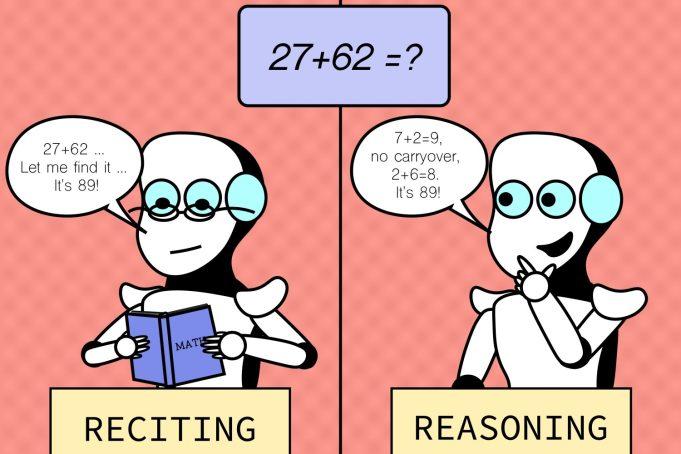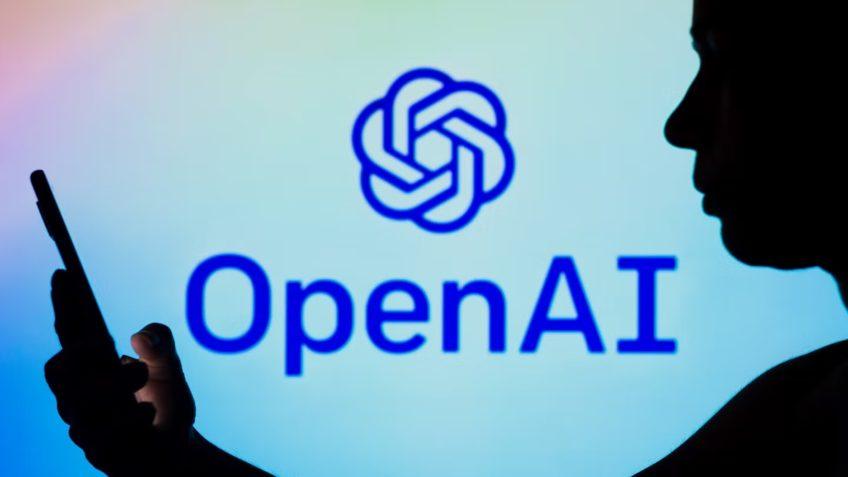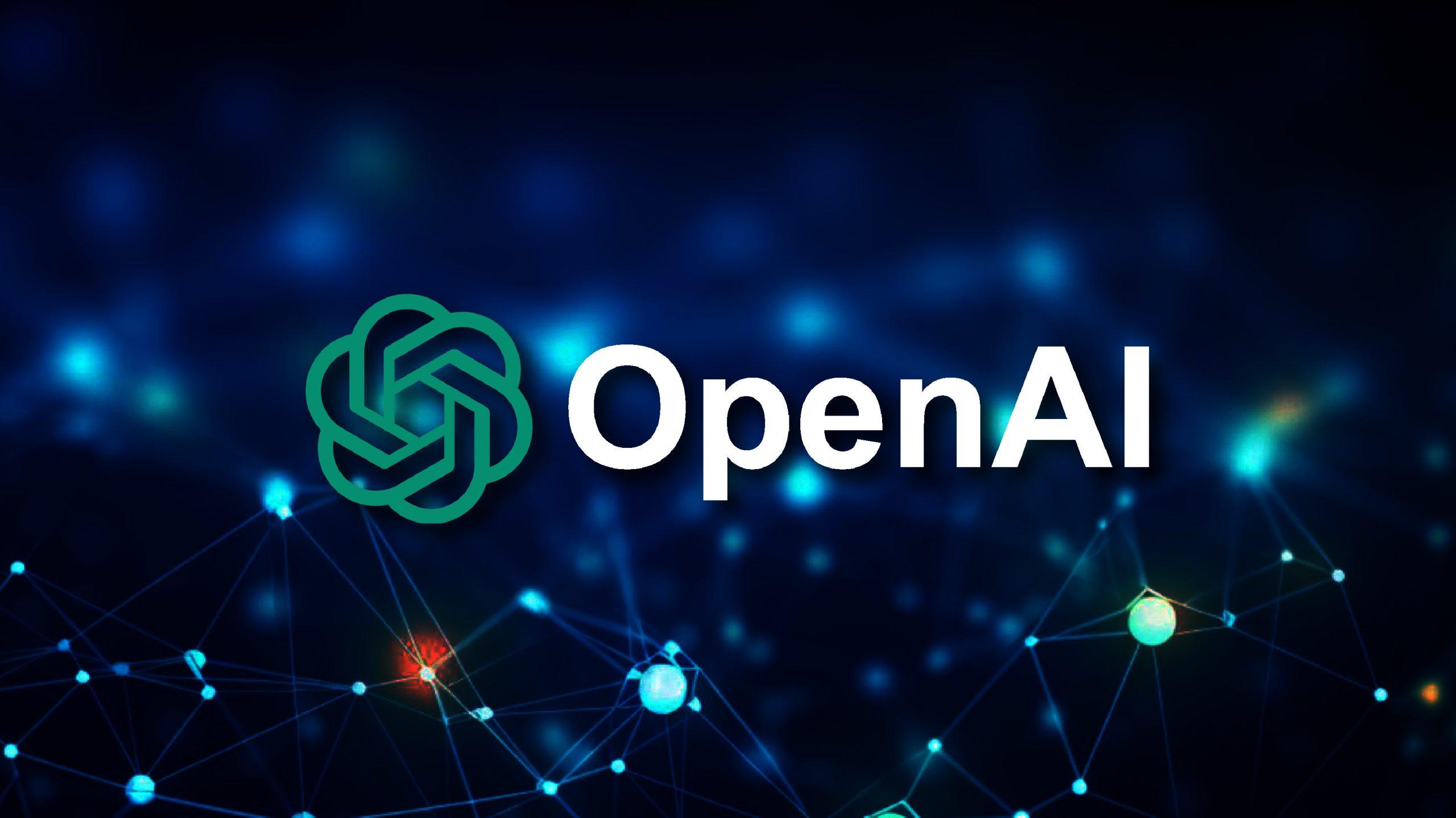In a world increasingly reliant on artificial intelligence, the pursuit of smarter, more capable reasoning models stands at the forefront of technological advancement. OpenAI, a frontrunner in AI research, has recently unveiled its latest iteration of reasoning models, designed to enhance the way machines interpret and process information. Yet, amidst the excitement of innovation lies a crucial examination: the basic errors that can emerge even from the most sophisticated algorithms. This article delves into the nuances of OpenAI’s recent developments, spotlighting the challenges and missteps that accompany the quest for near-perfect reasoning. As we explore the capabilities and limitations of these models, we invite readers to consider the implications they hold for the future of AI and its role in our daily lives.
Table of Contents
- Understanding the Mechanisms Behind Common Missteps in Reasoning Models
- Analyzing Case Studies of OpenAIs Recent Model Errors
- Strategies for Enhancing Accuracy in AI Reasoning Capabilities
- Recommendations for Developers: Navigating Limitations in AI Interpretation
- Q&A
- Concluding Remarks

Understanding the Mechanisms Behind Common Missteps in Reasoning Models
The intricacies of reasoning models can often lead to pitfalls that compromise their effectiveness. One of the primary issues arises from the overreliance on patterns that can generate misleading conclusions. These models typically analyze data inputs to identify correlations, but in some cases, they misinterpret these relationships, attributing causation where there is none. For instance, a model might observe that increases in ice cream sales coincide with a rise in drowning incidents, leading to a faulty conclusion that eating ice cream causes drowning, rather than recognizing that both are influenced by warmer weather. This highlights the necessity for a deeper contextual understanding in data interpretation.
Furthermore, the failure to accommodate anomalies within the dataset can result in skewed outcomes. Models often operate under the assumption that the data follows a certain distribution, which may not always hold true, especially with real-world data laden with outliers or exceptions. When a reasoning model encounters data points that diverge significantly from established trends, its responses can become erratic. Recognizing and addressing these anomalies is critical for improving model robustness. Below is a concise table illustrating some common missteps in reasoning models along with their potential impacts:
| Common Misstep | Potential Impact |
|---|---|
| Overgeneralization | Leads to false conclusions based on limited data. |
| Ignoring Contextual Factors | Produces skewed results that fail to reflect real-world complexities. |
| Misidentifying Correlation as Causation | Can result in misguided strategies based on faulty assumptions. |
| Inadequate Handling of Outliers | Causes unforeseen variability and undermines predictive accuracy. |

Analyzing Case Studies of OpenAIs Recent Model Errors
Examining the recent performance of OpenAI’s reasoning model reveals a pattern of basic errors that can have significant implications on outputs. Some notable instances include:
- Misinterpretation of Questions: The model has occasionally provided answers that diverge from the context of the questions posed, indicating flaws in comprehension.
- Logical Fallacies: Instances of circular reasoning and false dichotomies have been observed in responses, undermining the credibility of the conclusions drawn.
- Inconsistent Output: The same query can yield varying results, reflecting a lack of stability in reasoning processes.
The aftermath of these errors raises questions about the training data and methodologies employed. To illustrate the recent lapses, consider the following table that highlights common errors:
| Error Type | Example | Impact |
|---|---|---|
| Misinterpretation | Question about solar energy policy resulting in historical data | Obfuscates current discussions, leading to misinformation |
| Logical Fallacy | Claiming “A leads to B, therefore B implies A” | Weakens argument strength and logic |
| Inconsistency | Answering a math question with two different values | Creates confusion and erodes trust in the model |

Strategies for Enhancing Accuracy in AI Reasoning Capabilities
Enhancing the accuracy of AI reasoning capabilities involves a multi-faceted approach, focusing on refining both the training process and the end-user experience. One key strategy is the implementation of robust feedback loops, where AI systems are exposed to real-world data and corrections from users. This active learning not only tunes the model’s algorithms but also engages users in the iterative process, fostering a shared understanding in problem-solving. Additionally, contextual awareness can be reinforced by integrating knowledge graphs that interlink different data points, allowing AI to reason with a broader perspective and make more informed decisions.
Another important strategy is the utilization of ensemble methods, where multiple models with diverse architectures collaborate to arrive at a consensus output. This collective reasoning can mitigate individual model biases and errors, leading to greater accuracy. Furthermore, the importance of transparency in reasoning processes cannot be overstated; by developing systems that allow users to trace the logic behind AI decisions, developers can empower users and potentially uncover areas for improvement. The following table summarizes these strategies:
| Strategy | Description |
|---|---|
| Robust Feedback Loops | Incorporating user feedback to improve model performance. |
| Contextual Awareness | Using knowledge graphs to enhance information interlinking. |
| Ensemble Methods | Combining multiple models for improved reliability. |
| Transparent Reasoning | Allowing users to understand AI decision-making processes. |

Recommendations for Developers: Navigating Limitations in AI Interpretation
In light of the recent insights into OpenAI’s reasoning model, it’s essential for developers to approach AI interpretation with a discerning eye. Understanding the limitations of these models can prevent misapplications and enhance the efficacy of AI systems. Here are some strategic recommendations to consider:
- Foster a culture of skepticism: Encourage team members to critically evaluate AI outputs rather than accepting them at face value.
- Integrate human oversight: Utilize teams of domain experts to review and validate AI interpretations, particularly in high-stakes environments.
- Embrace iterative testing: Implement continuous testing cycles to identify common errors and areas for improvement in AI reasoning.
- Invest in user education: Ensure that end-users are aware of possible limitations and understand how to interpret AI-generated content effectively.
Moreover, developers can benefit from establishing robust debugging frameworks that specifically target AI reasoning flaws. By creating clear documentation and feedback loops, developers can refine the model’s performance and make informed adjustments. Consider the following framework as a starting point:
| Challenge | Proposed Solution |
|---|---|
| Misinterpretation of data | Use annotated datasets for training |
| Lack of context | Incorporate contextual embeddings |
| Overgeneralization | Employ fine-tuning techniques |
Q&A
Q&A: OpenAI’s Recent “Reasoning” Model and its Basic Errors
Q1: What is OpenAI’s newest reasoning model?
A1: OpenAI’s latest reasoning model is an advanced artificial intelligence system designed to improve the way AI systems understand and process complex information. This model focuses on tasks that require logical thinking, problem-solving, and a deeper comprehension of underlying concepts.
Q2: How does this model differ from previous iterations?
A2: Unlike earlier models that primarily leveraged pattern recognition, this new model incorporates more sophisticated techniques for logical reasoning and inference. It aims to bridge the gap between mere data processing and genuine understanding, enabling it to tackle intricate problems and generate more insightful responses.
Q3: What types of tasks is the model designed to perform?
A3: The model is particularly aimed at tasks such as mathematical reasoning, causal inference, and context-based decision-making. It’s intended for applications in various fields, from education to advanced scientific research, where complex reasoning is essential.
Q4: What are some of the basic errors that have been identified in this model?
A4: Despite its advancements, the model has exhibited a range of basic errors, including misinterpretations of context, incorrect applications of logical principles, and failures in sequential reasoning. These errors suggest that while the model can handle basic logic, it still struggles with nuanced or ambiguous information.
Q5: Can you provide an example of a basic error made by the model?
A5: One notable example involved the model incorrectly solving a mathematical word problem due to a misinterpretation of key terms. Instead of identifying the relevant variables accurately, it applied a sequence of operations that did not align with the problem’s requirements, leading to an erroneous conclusion.
Q6: How has OpenAI responded to these issues?
A6: OpenAI has acknowledged these basic errors and is actively working on improving the model through iterative updates. They are focusing on refining its training data and enhancing its algorithms to better equip the model to understand and navigate complex reasoning tasks.
Q7: What implications do these errors have for the future use of reasoning models?
A7: The presence of basic errors highlights the ongoing challenges in achieving true artificial intelligence that can reason like a human. It underscores the necessity for continuous learning and adaptation in AI systems. For users and developers, it serves as a reminder to critically evaluate AI outputs and maintain an understanding of their limitations.
Q8: What does the future hold for AI reasoning models?
A8: As research progresses, we can expect future models to become more proficient at understanding context and applying logic effectively. Improvement in multi-modal reasoning—integrating visual, textual, and numerical information—will likely enhance AI’s overall capabilities, leading to more reliable applications across various industries.
Q9: How can users best engage with this technology given its current limitations?
A9: Users are encouraged to approach the technology with a blend of optimism and caution. While it offers remarkable potential, critical thinking should accompany its use. Engaging with AI outputs skeptically and verifying the results can help mitigate any risks associated with its basic errors.
Q10: Where can readers learn more about OpenAI’s reasoning model and its developments?
A10: Readers can explore OpenAI’s official blog and research publications, which frequently publish updates on advancements, technical reports, and user guidelines. Engaging with community forums and discussions around AI can also provide valuable insights into real-world applications and challenges.
Concluding Remarks
OpenAI’s latest foray into the realm of reasoning models represents a significant leap forward in artificial intelligence. While the advancements are notable, the model’s occasional missteps highlight the complexities inherent in developing systems that aim to mimic human cognition. These basic errors serve as reminders that even the most sophisticated algorithms are still learning and evolving. As we continue to explore the potential of AI, it is crucial to approach these technological advancements with a blend of optimism and critical scrutiny. The journey towards truly intelligent systems is ongoing, and with each iteration, we edge closer to unlocking the full potential of artificial reasoning. Ultimately, understanding and addressing these errors can pave the way for a more nuanced and effective interaction between humans and machines, forging pathways for innovation that are as exciting as they are complex.

Baddiehub This was beautiful Admin. Thank you for your reflections.
ivermectin 6 mg without prescription – buy atacand 8mg sale order carbamazepine
isotretinoin 10mg tablet – dexamethasone price order zyvox 600 mg for sale
buy amoxicillin tablets – order ipratropium 100 mcg pills buy cheap generic combivent
Noodlemagazine Superb post! We will share this excellent piece on our platform. Keep up the outstanding work
azithromycin 250mg cost – azithromycin 250mg generic nebivolol oral
prednisolone us – azithromycin 250mg oral order progesterone generic
purchase gabapentin online cheap – sporanox price order itraconazole 100 mg pill
buy lasix 40mg online cheap – order piracetam online betamethasone online
buy generic acticlate – glucotrol online order glucotrol brand
augmentin 1000mg sale – order nizoral 200mg pills cheap duloxetine
augmentin pills – order duloxetine 40mg sale order duloxetine without prescription
buy semaglutide 14 mg – buy generic levitra over the counter periactin 4mg uk
tizanidine buy online – plaquenil 200mg uk order microzide online cheap
order generic sildenafil 50mg – viagra order online tadalafil 40mg tablet
buy cialis 10mg pills – cialis 40mg price sildenafil 50 mg
cenforce medication – cenforce 50mg without prescription buy glucophage
order atorvastatin 20mg generic – buy generic amlodipine order lisinopril 10mg generic
purchase prilosec online – buy tenormin 100mg online cheap buy tenormin online cheap
medrol 16mg oral – lyrica 75mg uk buy aristocort 10mg for sale
order generic clarinex – order claritin 10mg online cheap dapoxetine 60mg price
order misoprostol 200mcg generic – xenical 120mg for sale purchase diltiazem generic
buy zovirax 400mg online cheap – acyclovir 800mg without prescription buy cheap rosuvastatin
motilium 10mg generic – cost flexeril 15mg flexeril 15mg price
order motilium sale – buy domperidone tablets flexeril oral
cheap propranolol – buy inderal 10mg without prescription buy methotrexate no prescription
order medex for sale – buy medex for sale hyzaar buy online
buy nexium 20mg generic – imitrex cost imitrex order online
levaquin online buy – levaquin 500mg tablet cheap zantac 150mg
buy meloxicam 15mg sale – meloxicam 15mg tablet cost flomax 0.4mg
order generic ondansetron 4mg – spironolactone over the counter zocor 10mg over the counter
generic valacyclovir 500mg – propecia 1mg oral buy generic fluconazole 100mg
order provigil 200mg pill buy modafinil generic how to get modafinil without a prescription provigil online buy buy provigil 100mg for sale provigil online order buy provigil generic
This is the kind of glad I take advantage of reading.
More posts like this would add up to the online play more useful.
zithromax generic – oral sumycin 250mg how to buy metronidazole
semaglutide oral – order semaglutide 14 mg generic periactin 4 mg cost
motilium medication – order motilium pills order flexeril 15mg generic
inderal 10mg for sale – buy clopidogrel 150mg generic generic methotrexate
generic amoxicillin – ipratropium 100mcg canada buy generic combivent 100 mcg
buy zithromax pills – oral tindamax buy generic bystolic over the counter
purchase augmentin online – at bio info acillin uk
buy nexium 20mg online – https://anexamate.com/ esomeprazole 20mg for sale
buy medex cheap – cou mamide losartan online buy
mobic usa – https://moboxsin.com/ purchase mobic
oral prednisone – https://apreplson.com/ purchase prednisone
best over the counter ed pills – fastedtotake.com ed pills no prescription
amoxicillin order online – https://combamoxi.com/ buy generic amoxil online
order fluconazole 200mg pill – https://gpdifluca.com/# fluconazole 100mg pill
cenforce 100mg price – cenforcers.com buy cenforce pills
tadalafil with latairis – cheap cialis online overnight shipping cost of cialis for daily use
when will cialis be over the counter – https://strongtadafl.com/# cialis dapoxetine overnight shipment
order zantac 300mg sale – zantac 300mg without prescription buy generic ranitidine online
viagra 50mg price – https://strongvpls.com/# cheap viagra in london
More posts like this would create the online elbow-room more useful. this
This is the kind of enter I recoup helpful. https://buyfastonl.com/amoxicillin.html
This is the stripe of glad I enjoy reading. https://ursxdol.com/ventolin-albuterol/
Thanks for posting. It’s a solid effort.
The reconditeness in this ruined is exceptional. https://prohnrg.com/product/rosuvastatin-for-sale/
Such a beneficial insight.
I am in fact delighted to glance at this blog posts which consists of tons of useful facts, thanks for providing such data. https://aranitidine.com/fr/acheter-propecia-en-ligne/
I discovered useful points from this.
Thanks for sharing. It’s a solid effort.
I took away a great deal from this.
More content pieces like this would make the online space a better place.
I truly enjoyed the style this was laid out.
I discovered useful points from this.
I gained useful knowledge from this.
I learned a lot from this.
More articles like this would make the blogosphere better.
I’ll certainly return to read more.
This submission is incredible.
The depth in this piece is commendable.
I couldn’t turn down commenting. Warmly written! https://ondactone.com/simvastatin/
The detail in this article is praiseworthy.
This is a topic which is near to my fundamentals… Diverse thanks! Unerringly where can I upon the acquaintance details for questions?
https://doxycyclinege.com/pro/levofloxacin/
Thanks on putting this up. It’s understandably done. http://sols9.com/batheo/Forum/User-Toaqpr
purchase dapagliflozin – site dapagliflozin for sale online
cost xenical – xenical without prescription xenical 60mg for sale
More posts like this would prosper the blogosphere more useful. http://www.underworldralinwood.ca/forums/member.php?action=profile&uid=493579
You can keep yourself and your stock by being wary when buying prescription online. Some pharmacy websites operate legally and provide convenience, secretiveness, sell for savings and safeguards for purchasing medicines. buy in TerbinaPharmacy https://terbinafines.com/product/orlistat.html orlistat
This is the kind of topic I take advantage of reading. online
This is the kind of writing I in fact appreciate.
https://t.me/s/Top_BestCasino/173
https://t.me/s/Top_BestCasino/173
https://t.me/s/officials_pokerdom/3445
https://t.me/officials_pokerdom/3880
https://t.me/officials_pokerdom/3175
https://t.me/s/iGaming_live/4866
https://t.me/s/iGaming_live/4866
https://t.me/s/iGaming_live/4866
https://t.me/s/Irwin_officials
https://t.me/s/BEeFcaSIno_OfFiCiALS
https://t.me/s/Martin_casino_officials
What a material of un-ambiguity and preserveness of precious familiarity concerning unpredicted emotions.
Find Female Escorts in Brazil
https://t.me/s/iGaming_live/4871
https://t.me/s/iGaming_live/4871
https://t.me/dragon_money_mani/10
https://t.me/dragon_money_mani/40
https://t.me/s/be_1win/796